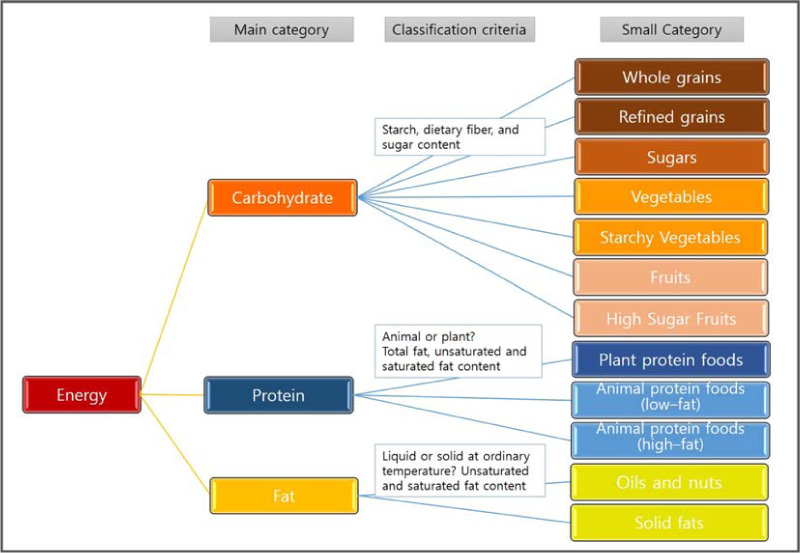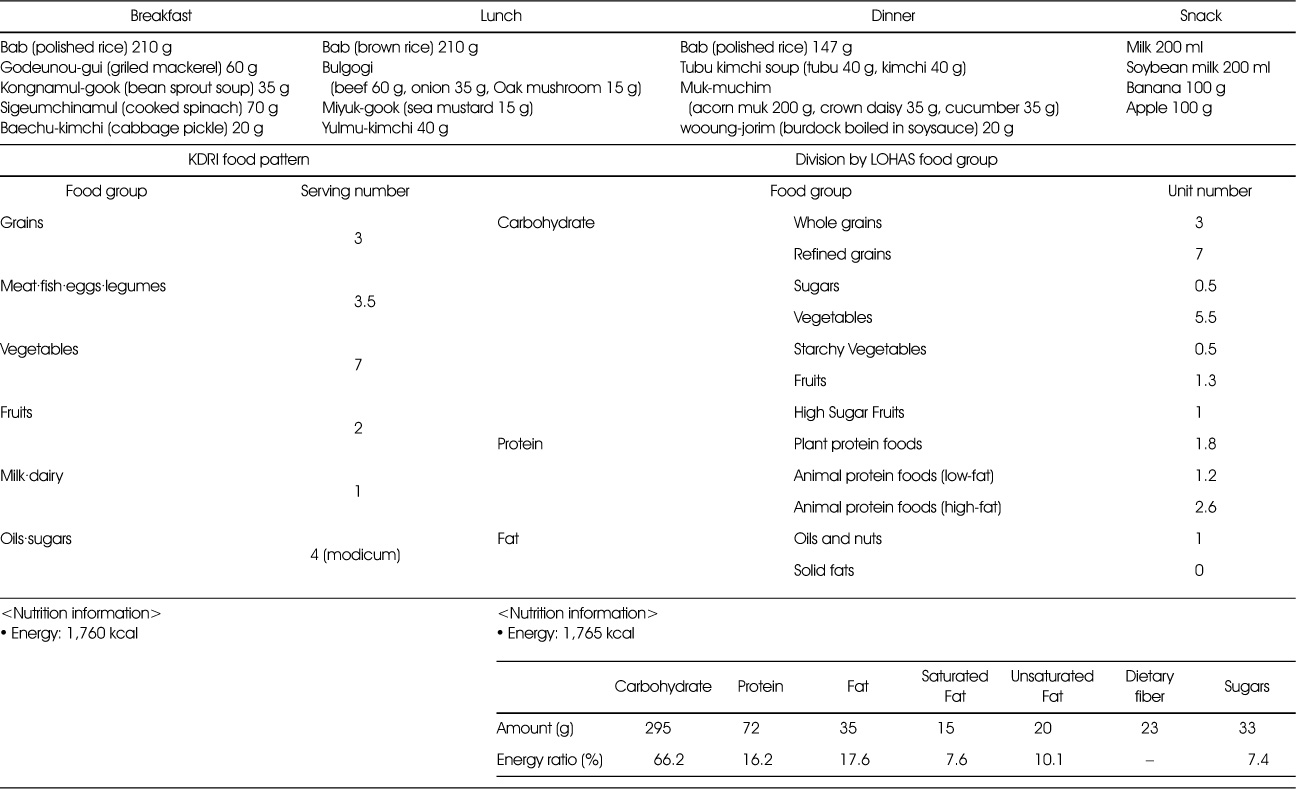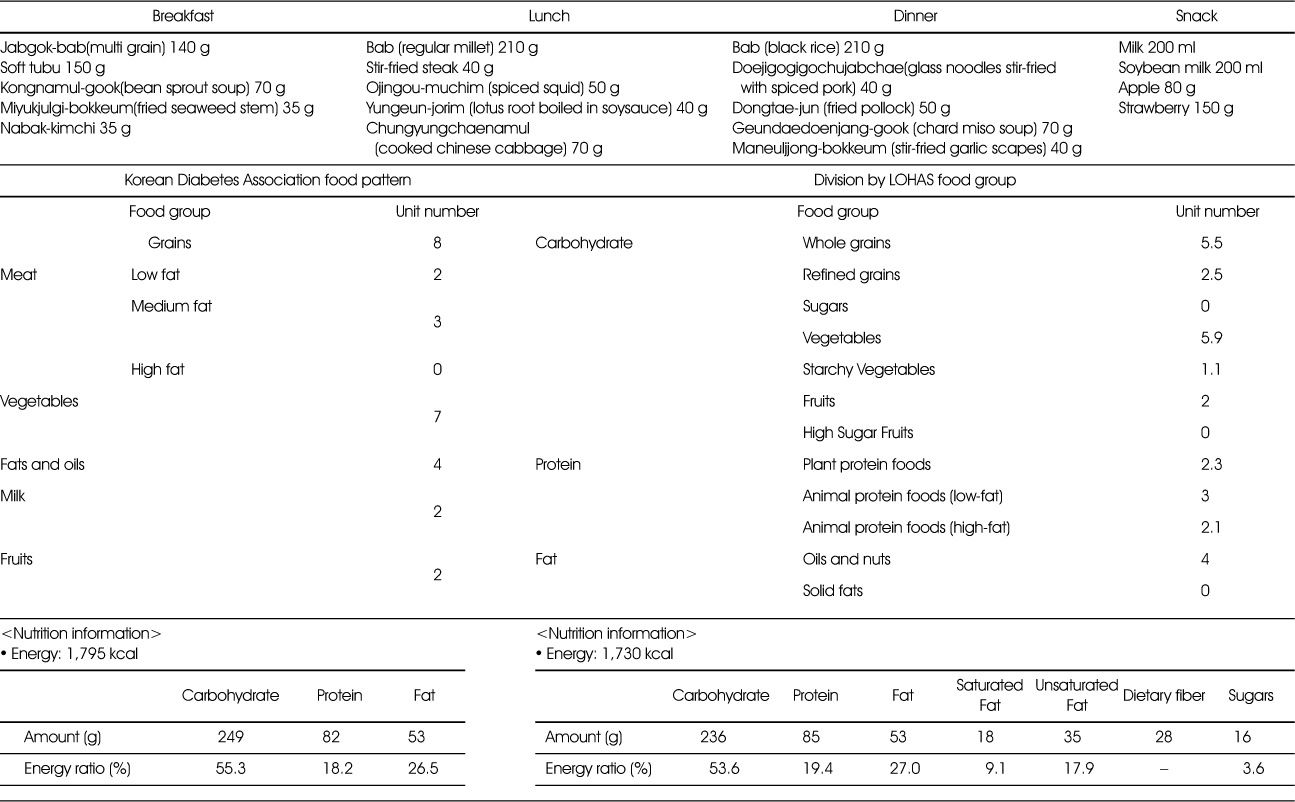Articles
- Page Path
- HOME > Korean J Community Nutr > Volume 23(5); 2018 > Article
-
Research Article
- Development of a Food Exchange Table and Food Pattern for Nutritionally Balanced Menu Planning
-
Yun Ahn, Ikhyun Yeo, Sangyun Lee, Kisun Nam

-
Korean Journal of Community Nutrition 2018;23(5):411-423.
DOI: https://doi.org/10.5720/kjcn.2018.23.5.411
Published online: October 31, 2018
1Health & Nutrition Research Center, Corporate Technology Office, Pulmuone Co., Ltd. Seoul, Korea, Senior Researcher.
2Corporate Technology Office, Pulmuone Co., Ltd. Seoul, Korea, Director.
3Corporate Technology Office, Pulmuone Co., Ltd. Seoul, Korea, Head.
4Health & Nutrition Research Center, Corporate Technology Office, Pulmuone Co., Ltd. Seoul, Korea, Head.
- Corresponding author: Kisun Nam. Corporate Technology Office, Pulmuone Co., Ltd., 50 Yonsei-ro, Seodaemun-Gu, Seoul 03722, Korea. Tel: (02)3277-8553, Fax: (02)6499-0129, ksnama@pulmuone.com
Copyright © 2018 The Korean Society of Community Nutrition
This is an Open-Access article distributed under the terms of the Creative Commons Attribution Non-Commercial License (http://creativecommons.org/licenses/by-nc/3.0/) which permits unrestricted non-commercial use, distribution, and reproduction in any medium, provided the original work is properly cited.
- 1,713 Views
- 6 Download
- 4 Crossref
Figure & Data
REFERENCES
Citations

- The association between COVID-19 and changes in food consumption in Korea: analyzing the microdata of household income and expenditure from Statistics Korea 2019–2022
Haram Eom, Kyounghee Kim, Seonghwan Cho, Junghoon Moon
Journal of Nutrition and Health.2024; 57(1): 153. CrossRef - Development of a food exchange atlas for Sri Lankan adults
Ranil Jayawardena, Dhanushya T. Jeyakumar, Manoja Gamage
Journal of Food Composition and Analysis.2023; 118: 105154. CrossRef - Development and validation of a nutrition literacy assessment tool for young adults
Seokyoung Ahn, Bogyeong Kim, Mihyang Um, Yookyung Park, Seunghee Kye
Journal of Nutrition and Health.2020; 53(2): 175. CrossRef - A Study on Decision Making by Visualization with Food Nutrition Information
Sang-heon Oh, Sung-Hee Kim
Journal of Digital Contents Society.2020; 21(2): 357. CrossRef

Fig. 1
LOHAS food exchange table: specific characteristics and foods of food group
1) GI: Glycemic Index
LOHAS food exchange table: the amount of nutritions and foods in 1 exchange
LOHAS food pattern(1,800kcal diet per day for adult)
Assessment of 1,800 kcal (A pattern) recommended diet for Korean adult (KDRIs)
Assessment of 1,800kcal recommended diet for diabetic patient (Korean Diabetes Association)
Comparison of 1,800kcal LOHAS food pattern with KDRIs and Diabetes Association 1,800 kcal recommended diet : division by LOHAS food group
1) GI: Glycemic Index

 KSCN
KSCN







 PubReader
PubReader Cite
Cite


